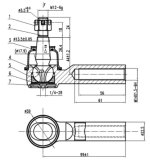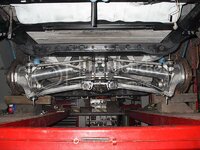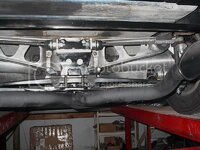Well, I've got inquiries in four different forums, and hundreds of views, and minimal response. I'm coming to the conclusion that C5 guys either never look under their car, or they're just not that willing to help. I'm close to just posting the question to some sellers on ebay. The prospect of making some money off me might persuade someone to grab a tape measure and help me out.
A backup plan is to make my own links using tie rod ends. The only tie-rod ends I see that fit most Corvette knuckles of the last 15-20 years uses M14-1.5 female threads. But I'm not sure how to make the connecting link. I checked several places and getting M14-1.5 rod in a reasonable strength isn't easy. I could use tubing for the main body, and then just screw long studs into each end, but I still would need decent strength 14mm threaded material (and both RH and LH threads). So, I'm still looking.
I kicked around the (preferred) idea of using SAE tie-rod ends and reaming the knuckle bores to fit the SAE ends (and then being able to use easily available and inexpensive DOM tubing from the speed shop catalogs), but I can't find parts descriptions of the tapered stud length. The Moog site shows the thread sizes and pitch, along with the stud taper, but not the length of the stud. The later Corvette ends seem to have longer studs as they fit into aluminum knuckles rather than the previous steel arms/knuckles. (Maybe I'll get back on Moog's website and see if there's a place to ask for additional technical info about their products.)
Any help or advice is welcomed.




